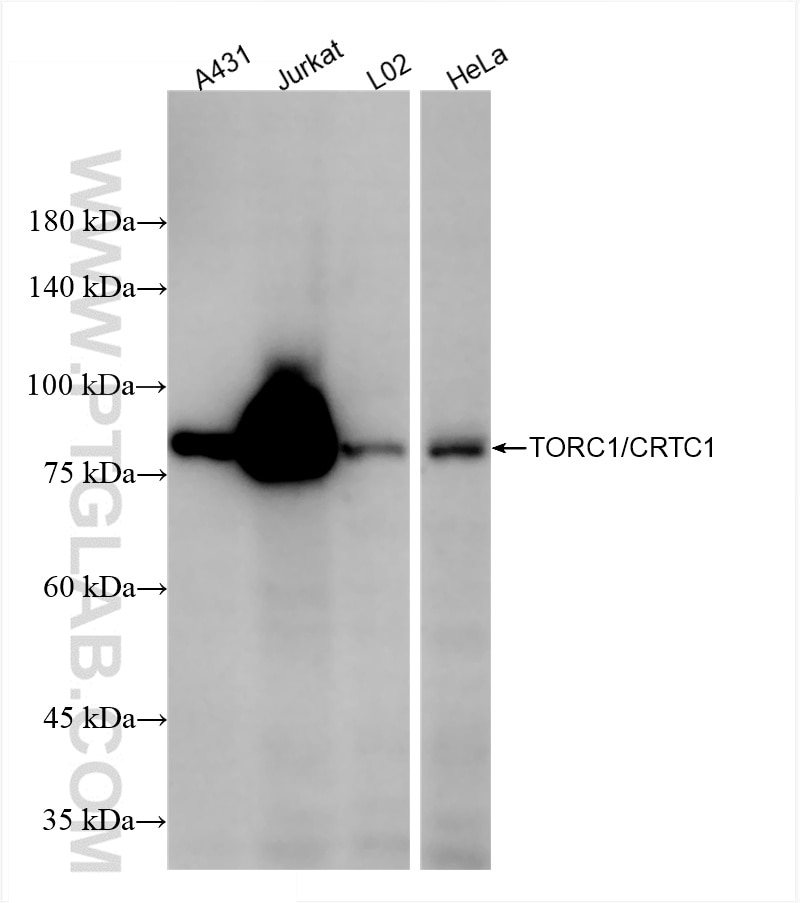TORC1/CRTC1 Rekombinanter Antikörper
TORC1/CRTC1 Rekombinant Antikörper für WB, Indirect ELISA
Wirt / Isotyp
Kaninchen / IgG
Getestete Reaktivität
human
Anwendung
WB, Indirect ELISA
Konjugation
Unkonjugiert
CloneNo.
250870G10
Kat-Nr. : 86226-3-PBS
Synonyme
Geprüfte Anwendungen
Produktinformation
86226-3-PBS bindet in WB, Indirect ELISA TORC1/CRTC1 und zeigt Reaktivität mit human
| Getestete Reaktivität | human |
| Wirt / Isotyp | Kaninchen / IgG |
| Klonalität | Rekombinant |
| Typ | Antikörper |
| Immunogen | TORC1/CRTC1 fusion protein Ag0693 |
| Vollständiger Name | CREB regulated transcription coactivator 1 |
| Berechnetes Molekulargewicht | 75 kDa |
| Beobachtetes Molekulargewicht | 68-80 kDa |
| GenBank-Zugangsnummer | BC028050 |
| Gene symbol | CRTC1 |
| Gene ID (NCBI) | 23373 |
| Konjugation | Unkonjugiert |
| Form | Liquid |
| Reinigungsmethode | Protein-A-Reinigung |
| Lagerungspuffer | PBS only |
| Lagerungsbedingungen | Store at -80°C. 20ul Größen enthalten 0,1% BSA. |
Hintergrundinformationen
CRTC1, also named as MECT1,TORC1, and WAMTP1, belongs to the TORC family. It is a transcriptional coactivator for CREB1 which activates transcription through both consensus and variant cAMP response element (CRE) sites. CRTC1 acts as a coactivator, in the SIK/TORC signaling pathway, being active when dephosphorylated and acts independently of CREB1 'Ser-133' phosphorylation. It enhances the interaction of CREB1 with TAF4. CRTC1 regulates the expression of specific CREB-activated genes such as the steroidogenic gene, StAR. It is a potent coactivator of PGC1alpha and inducer of mitochondrial biogenesis in muscle cells. CRTC1 is also a coactivator for TAX activation of the human T-cell leukemia virus type 1 (HTLV-1) long terminal repeats (LTR). In the hippocampus, CRTC1 involved in late-phase long-term potentiation (L-LTP) maintenance at the Schaffer collateral-CA1 synapses. It may be required for dendritic growth of developing cortical neurons. CRTC1 has some isoforms produced by alternative splicing with MW of 67 kDa, 68 kDa and 62 kDa. Sometimes it appears as a 75-80 kDa band probably due to phosphorylation (PMID: 17183642; 22770221)





